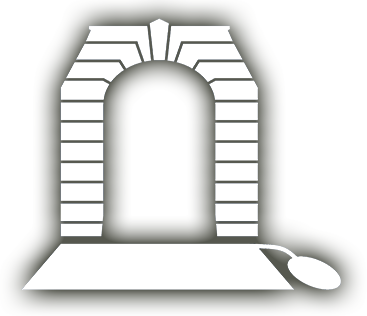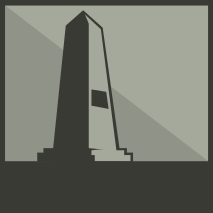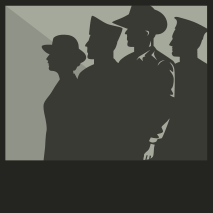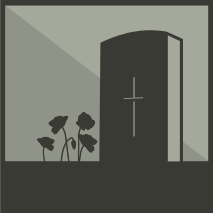ROBERTSON, Horace Clement Hugh
| Service Number: | 34 |
|---|---|
| Enlisted: | 1 January 1912, Royal military College from Geelong College |
| Last Rank: | Lieutenant General |
| Last Unit: | 10th Light Horse Regiment |
| Born: | WARNAMBOOL, VIC, 29 October 1894 |
| Home Town: | Not yet discovered |
| Schooling: | Not yet discovered |
| Occupation: | Banker |
| Died: | Heart Operation, Heildelberg Repatriation hospital Melbourne, date not yet discovered |
| Cemetery: | Not yet discovered |
| Memorials: | Geelong College WW1 Roll of Honour |
Non Warlike Service
| 1 Jan 1912: | Enlisted Australian Army (Post WW2), Royal military College from Geelong College |
|---|
World War 1 Service
| 8 Feb 1915: | Involvement Lieutenant, 10th Light Horse Regiment, --- :embarkation_roll: roll_number: '3' embarkation_place: Fremantle embarkation_ship: HMAT Mashobra embarkation_ship_number: A47 public_note: '' | |
|---|---|---|
| 8 Feb 1915: | Embarked Lieutenant, 10th Light Horse Regiment, HMAT Mashobra, Fremantle |
World War 2 Service
| 20 Apr 1940: | Enlisted Australian Military Forces (WW2) , Colonel, 34 |
|---|
Korean War Service
| 28 Sep 1950: | Involvement Australian Army (Post WW2), Lieutenant General, 34 | |
|---|---|---|
| 18 Oct 1950: | Involvement Australian Army (Post WW2), Lieutenant General, 34 | |
| 30 Oct 1950: | Involvement Australian Army (Post WW2), Lieutenant General, 34 | |
| 28 Nov 1950: | Involvement Australian Army (Post WW2), Lieutenant General, 34 | |
| 4 Jan 1951: | Involvement Australian Army (Post WW2), Lieutenant General, 34 | |
| 17 Jan 1951: | Involvement Australian Army (Post WW2), Lieutenant General, 34 | |
| 13 Feb 1951: | Involvement Australian Army (Post WW2), Lieutenant General, 34 | |
| 13 Mar 1951: | Involvement Australian Army (Post WW2), Lieutenant General, 34 | |
| 18 Mar 1951: | Involvement Australian Army (Post WW2), Lieutenant General, 34 | |
| 8 Apr 1951: | Involvement Australian Army (Post WW2), Lieutenant General, 34 | |
| 21 Apr 1951: | Involvement Australian Army (Post WW2), Lieutenant General, 34 | |
| 27 Apr 1951: | Involvement Australian Army (Post WW2), Lieutenant General, 34 | |
| 1 May 1951: | Involvement Australian Army (Post WW2), Lieutenant General, 34 | |
| 13 May 1951: | Involvement Australian Army (Post WW2), Lieutenant General, 34 | |
| 8 Jul 1951: | Involvement Australian Army (Post WW2), Lieutenant General, 34 | |
| 26 Jul 1951: | Involvement Australian Army (Post WW2), Lieutenant General, 34 | |
| 29 Aug 1951: | Involvement Australian Army (Post WW2), Lieutenant General, 34 | |
| 18 Sep 1951: | Involvement Australian Army (Post WW2), Lieutenant General, 34 | |
| 4 Oct 1951: | Involvement Australian Army (Post WW2), Lieutenant General, 34 | |
| 22 Oct 1951: | Involvement Australian Army (Post WW2), Lieutenant General, 34 | |
| 3 Nov 1951: | Involvement Australian Army (Post WW2), Lieutenant General, 34 | |
| 12 Nov 1951: | Involvement Australian Army (Post WW2), Lieutenant General, 34 | |
| 14 Dec 1951: | Involvement Australian Army (Post WW2), Lieutenant General, 34 |
Help us honour Horace Clement Hugh Robertson's service by contributing information, stories, and images so that they can be preserved for future generations.
Add my storyBiography contributed by Faithe Jones
Known to soldiers around the world as Red Robbie for his red hair, he was a dynamic, colourful and likeable man. Red Robbie was a brilliant soldier and an outspoken person. He served in Gallipolli, Egypt, Sinai, Palestine and Syria. In 1916 with the rank of Brevet Major he led the 10th Light Horse Regiment in the first calvary charge ever made by Australian troops at Magdhaba in Sinai. It was in Sinai that he accepted the first sword of surrender from a Turkish General. He was to accept five more swords in surrenders. In 1940 he commanded the 19th Australian Infantry Brigade in the first Libyan campaign, when part of the 6th Division it took part in the capture of Bardia, Tobruk, Derna and Benghazi. In these battles he took surrenders from Major of the city of Benghazi, from an Italian Generals at Bardia and Tobruk and an Italian Admiral at Tobruk. When the Pacific War ended he accepted the sword of General Adachi commander of the 18th Army and at the same time the sword of Rear Admiral Sato commander of the Japanese naval forces in New Guinea.
He often warned that possession of nuclear weapons would necessarily stop future wars. His distinguished record in both the First and Second World Wars was crowned by his appointment in June 1946 as Commander in Chief of the British Commonwealth Occupation Forces in Japan. While he was Commander in Cheif he was Knighted in 1950.
At the outset of the Korean War Sir Horace was appointed Commander in Cheif of the British Commonwealth Forces there and he returned to australia in November 1951 as Director General of Recruiting. he was appointed General Operations Comanader Southern Command a position he held until he retired in 1954. in may 1958 he was appointed a commisioner of the State savings bank. His heart was operated on and shortly after he died. He had a military funeral in Melbourne. from Sentry-Go June 1960 p.5.















